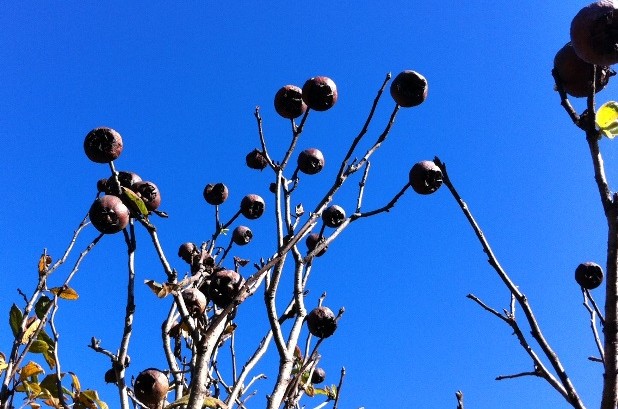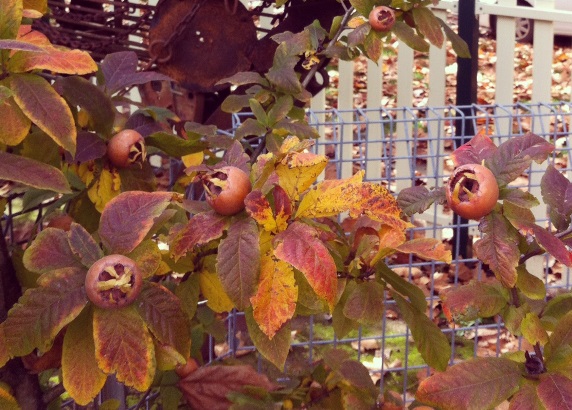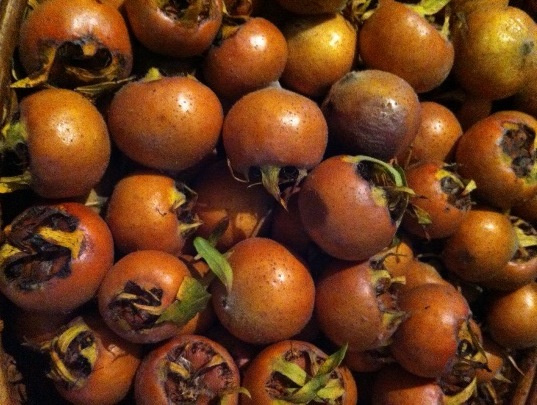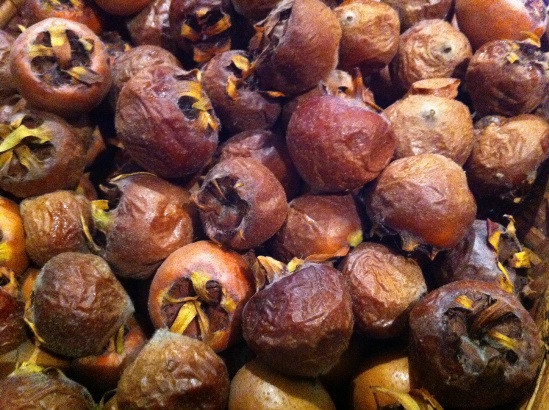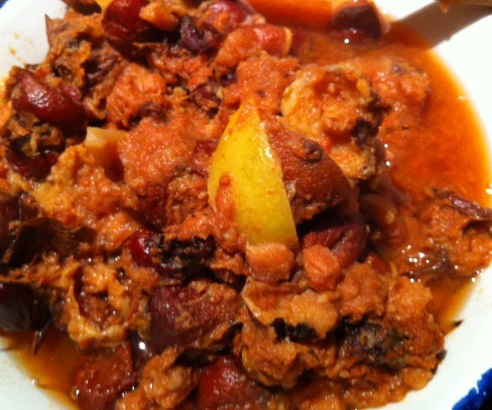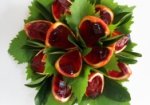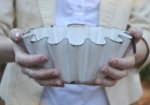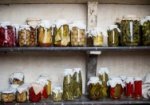Long Life to that House on the Hill of Rouse! … for comfort peace and mirth,
…and oh the goodly Cream & Pies the Ham – the Fowls – the Custard,
The Rolls & Eggs – that cooked themselves – & don’t forget the Mustard
The Oranges & Marmalade – the Medlars & the damper….Mrs Robinson, house guest at Rouse Hill c1858/60.
Meddling with an ancient fruit
It doesn’t seem to have survived, but the Rouse’s must have had a medlar tree on the estate in the mid-1800s, as the Rouse’s guest ‘poet’ alludes. Medlars, the fruit of Mespilus germanica, are an ancient and rather extraordinary fruit, looking somewhat like large crab-apples, but the tree is actually a member of the rose family. You don’t come across them very often – usually in very old fashioned gardens. A medlar grows at Vaucluse House, but they are better suited to cold climates, and it doesn’t yield much fruit. I was hoping I’d see some at the growers market in Orange when I visited last month, but alas, couldn’t find anyone selling them.
Eureka!
I eventually struck gold, finding a medlar tree, well laden with fruit in the picturesque rural village of Millthorpe, in the garden at the Golden Memories museum. The museum has a fascinating collection of agricultural technology, much of it in working order, thanks to the dedicated team of volunteers who run the museum. I was delighted to operate an egg sorter, an apple grader, and an electric butter churn amongst an array of other ingeniously designed equipment that made farming easier in the past. At the end of my tour, my guides, Rosemary and Peter gave me permission to harvest some medlars which I brought home to make into medlar jelly.
Really rotten luck
When freshly picked the medlars are rock hard and many ignore them as a food source as they are completely inedible. The secret is to ‘blet’ them before cooking – an almost completely lost word you don’t find in many dictionaries. Bletting means decaying or rotting, and the medlar fruit will only start to blet once it leaves the tree. It took over a week for my medlars to become bletted, and at different rates, so I sorted and turned them every few days to ensure they bletted evenly. Once they’d reached quite a squishy stage I stored them in the fridge to arrest the process, and so the remaining medlars could continue their slow decay.
Beautifully bletted
Once my stash of fruit was well bletted I rinsed them and boiled them up with a lemon, sliced up – seeds and all, in just enough water to cover the fruit. Once they were soft I strained them into a deep pot through several layers of muslin and left them to hang over the pot overnight. Once upon a time this would have been done using a ‘jelly stool’ made expressly for the purpose. Next morning I measured the liquid and boiled it for a few minutes, then reduced the heat and added the same quantity of sugar, stirring slowly until it had dissolved. Once all sign of the sugar granules has gone, the mixture is boiled until it reaches setting, or gelling point, just the same way as other jellies we’ve written about before. The sugar clarified what had been a murky looking dull red juice, and as it cooked it took on a beautiful clear and bright ruby tone. Medlar jelly has its own subtle but distinctive flavour, quite different to rosellas and lilly pillys for example. It is delicious with roast pork or duck, or with an oozy brie or Camembert, as a poor cousin of the traditional ‘medlar cheese’.
Medlar cheese
Medlar cheese is an even more traditional, and less wasteful, preserve. A popular sweetmeat in medieval times, medlar cheese is akin to quince or other fruit ‘pastes’ which we would serve with cheese. The fruit is cooked until very soft then rubbed through a sieve to remove the pips and yield a rather unattractive sticky pulp. The pulp is then cooked down with sugar until it gels and becomes a near solid mass. I tried this with medlars a year or two back, ambitiously thinking I could adapt a quince paste recipe to use as a guide, but the mix cooked far more quickly than I’d anticipated, and I ended up burning and ruining the batch, to my great disappointment. If I get another opportunity next winter perhaps I’ll give it another go.
‘Until we’re rotten we cannot be ripe’
According to English food writer Jane Grigson, the French have a rather descriptive nickname for medlars – ‘cul de chien‘ which I shan’t translate here… the English were apparently even less polite in their translation of them. Chaucer and Shakespeare wrote of them, alluding to their peculiar form and ‘perverse’ nature – being desirable only in their rotten or aged state. The Reeve’s Prologue in Canterbury Tales, for example (as presented by Librarius)
But ik, am oold, me list no pley for age, Gras-tyme is doon, my fodder is now forage, This white top writeth myne olde yeris, Myn herte is mowled also as myne heris —But if I fare as dooth an open-ers. That ilke fruyt is ever lenger the wers, Til it be roten in mullok or in stree. We olde men, I drede, so fare we: Til we be roten, kan we nat be rype…
But I am old, I will not play for age, Grass time is done, my fodder is rummage, This white top reveals my old years, My heart too, is as mouldy as my hairs, Unless I be like medlar, all perverse. That same fruit increasingly grows worse, until its rotten in mullock or straw. We old men, I fear obey this law: until we’re rotten we cannot be ripe…
Sources:
Macquarie dictionary
Jane Grigson’s Fruit Book Jane Grigson (1982)
Librarius The Canterbury Tales and other works by Geoffrey Chaucer (online).
